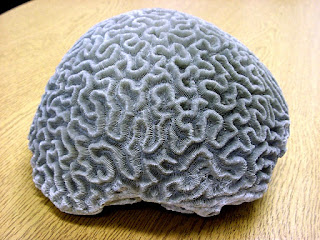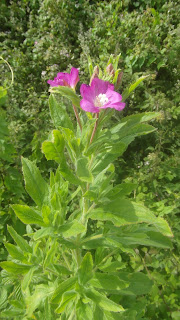It has been predicted that the Swallowtail, Britain's largest butterfly, will disappear from these islands in the next 40 years (https://www.theguardian.com/environment/2018/jun/29/sea-level-rise-could-wipe-out-swallowtail-butterfly-in-40-years). The butterfly is mainly found in the fens of Norfolk and Cambridgeshire where its larva feeds only on Milk parsley. The problem is that this food plant has no salt tolerance and the predicted raising of the sea-level in the near future will convert the fens into saltmarsh. No food plant: no butterfly.
This blog may help people explore some of the 'hidden' issues involved in certain media treatments of environmental and scientific issues. Using personal digital images, it's also intended to emphasise seasonal (and other) changes in natural history of the Swansea (South Wales) area. The material should help participants in field-based modules and people generally interested in the natural world. The views are wholly those of the author.
Saturday, 30 June 2018
Swallowtail to be Swallowed Up?
It has been predicted that the Swallowtail, Britain's largest butterfly, will disappear from these islands in the next 40 years (https://www.theguardian.com/environment/2018/jun/29/sea-level-rise-could-wipe-out-swallowtail-butterfly-in-40-years). The butterfly is mainly found in the fens of Norfolk and Cambridgeshire where its larva feeds only on Milk parsley. The problem is that this food plant has no salt tolerance and the predicted raising of the sea-level in the near future will convert the fens into saltmarsh. No food plant: no butterfly.
Friday, 29 June 2018
Wednesday, 27 June 2018
Town Bee or Country Bee?
A somewhat counter-intuitive finding from Royal Holloway London is the observation that bumblebee colonies (important wild pollinators) thrive better in urban locations than they do in the countryside (https://www.theguardian.com/environment/2018/jun/27/bumblebees-thrive-in-towns-more-than-countryside). The colonies persist longer, are bigger and produce more queens to spread the species. The authors of the study consider many possible factors to account for the difference including noting that, in towns, there is a relative absence of some bumblebee brood parasites, a diverse range of flowering plants is found in gardens/parks and you do not find anything like the levels of insecticides and herbicides that are common in agriculture. I personally think that the last-mentioned factor is by far the most important. One could also add that there may be benefits for the town-based bees as flowers in these locations bloom at a variety of times (the agricultural processes generally result in pollen and nectar only being produced over short, defined periods).
Monday, 25 June 2018
Seeing the Changes 1334
Tobacco Tales
With all the recurrent UK concerns about unhealthy diets and the perceived 'success' of the anti-smoking campaigns (including the development of 'healthy' vaping), one might have got the impression that tobacco no longer poses any health issues. There is, however, evidence that child labour is rampant in countries, such as Malawi, that farm the plant (https://www.theguardian.com/world/2018/jun/25/revealed-child-labor-rampant-in-tobacco-industry). The children not only miss out on education but are exposed, under gruelling extended conditions, to toxic pesticides and fertilisers used on the crop. One of the less reported consequences is a high incidence of 'Green Tobacco Sickness' which results from workers, of any age, directly handling (under damp conditions-via watering or sweat) the leaves of the plants. This results in nicotine poisoning (nicotine is a highly toxic protection presumably used by the plant to deter herbivores) via the skin. The poisoning results in nausea, sickness, stomach cramps and migraines.
Sunday, 24 June 2018
Super-sizing Supermarkets?
Everyone (including the UK government) appear to accept that the country has an 'obesity epidemic' with dire health and costs consequences (https://www.theguardian.com/society/2018/jun/24/helm-boseley-health-diet-eating-obesity-policy-eating-sugar-salt-fat). The latest focus appears to be the activities of supermarkets (especially displays in the check-out aisles). Supermarkets (and other shops and on-line suppliers?) certainly can play a role in countering the intake of too many calories, too much unhealthy food and giving the buying public more information on healthy choices. Having said that, they are in the business of selling stuff, so expecting them to 'police' health is, I feel, expecting too much (especially if we rely on 'voluntary' actions). It seems to be that the government needs to be more pro-active and should be legislating to help parents provide the appropriate nutrition (and exercise?).
Corals Too Slow to Survive?
A number of studies have suggested that the growth rate of corals is too slow to deal with the current rate of sea-level rises (https://www.scimex.org/newsfeed/coral-reefs-losing-ability-to-keep-pace-with-sea-level-rise). This suggests that climate change will result in the 'drowning' of most coral formations (these animals need to operate in shallow water to enable their symbiotic algae to be able to photosynthesise nutrients on which the coral depends). This would have a devastating impact on many oceanic islands (both physically and in terms of scuba-linked tourism). It would have an event worse effect on their extraordinary biodiversity.
Saturday, 23 June 2018
Towering Expectations
I must admit to having some sympathies (I am taller than average) with Charles Byrne who was dubbed 'The Irish Giant', as his medical condition resulted in his being more than 2.30 m tall (https://www.theguardian.com/science/2018/jun/22/irish-giant-may-finally-get-respectful-burial-after-200-years-on-display). His skeleton has been on display at the Hunterian museum in London for more than 200 years, in spite of his expressed wish to be buried at sea (bribery of the undertaker may have been involved). An individual may make money out of a condition whilst alive but that shouldn't mean his remains can be displayed, against his wishes, after death. I am not certain the museum would lose much if the skeleton is buried at sea?
Friday, 22 June 2018
Herpes and Alzheimers
Recent studies have revealed that the brains of Alzheimer patients often have high concentrations of herpes virus (https://www.theguardian.com/society/2018/jun/21/alzheimers-link-to-herpes-virus-in-brain-say-scientists). It is uncertain whether the virus (sometimes linked to sexual activity) has a role in creating the dementia or whether the neurological condition predisposes individuals to infection. This is yet another factor that needs to be considered in attempts to develop treatments that might prevent Alzheimer's or treatments that can be applied to patients with the neurological condition.
A Long Way Back for the Big Island
The massive lava flows from Kilauea on Hawaii's Big Island have apparently destroyed a unique area of rainforest and many marine pools with impressive reef life (https://www.theguardian.com/us-news/2018/jun/20/hawaii-volcano-eruption-kilauea-natural-wonders-destroyed-kapoho-bay). It is estimated that it will take at least 100 years for the new lava flows to mature into anything like the destroyed habitats. This is, of course, a completely natural destructive event but it does, perhaps, suggest that such locations need an increased range of protected areas (putting all your 'eggs in one basket' near an active volcano is not an optimal strategy).
Eels and Nose Candy
An interesting study from Naples has demonstrated that the tiny concentrations of cocaine derivatives that contaminate river waters from drug users (especially near big cities in Italy and England), seem likely to severely impair the ability of European eels to undertake their long reproductive migrations between the sea and freshwater (https://www.theguardian.com/environment/2018/jun/21/cocaine-in-rivers-harming-endangered-eels-study-finds). The drug alters the activity of the fish and also damages its musculature and its fat stores (needed to power the migration). Even 'rehabilitating' the eels in clean water for several days, failed to restore the fish's condition. This is yet another example of a detrimental effect of humans on other animals but who would have considered such a link likely?
Wednesday, 20 June 2018
Tuesday, 19 June 2018
Monday, 18 June 2018
Food Crisis or a Food Crisis?
The Chief Executive of pesticide manufacturer, Syngenta, which is now owned by China, is apparently claiming that curbs on 'agricultural' technologies might well 'lead to a food crisis in 10 years' as the impact of climate change take hold (https://www.theguardian.com/environment/2018/jun/17/high-risk-food-shortages-pesticides-chemical-giant). He (somewhat predictably) contradicts UN claims that that pesticides are not a panacea for feeding the world, suggesting that farmers can get better at 'focusing' the use of these chemicals (and might well use less). I do worry, however, that a company that reportedly sells EU-banned herbicides (such as Paraquat) in the US and Brazil is not totally focused on the detrimental effects of agricultural chemicals on populations of pollinating insects (as well as damaging exposed humans). Losses of these species would also trigger early food crises. We need technological innovation but we also need controls on herbicide and insecticide use.
Going Bananas!
The world's banana crop is apparently under imminent threat from a fungal epidemic, Panama disease, that is sweeping plantations in many areas of the globe (https://www.theguardian.com/global-development/2018/jun/18/scientists-scramble-to-stop-bananas-being-killed-off). A similar thing happened in the 1950's leading to the then dominant variety being largely replaced (almost 100%) by the single Cavendish strain. It is always a bad idea to have a single strain as there will be no variation in resistance to disease and pathogens can spread rapidly in such circumstances. It is reported that scientists are working hard to genetically engineer a resistant strain of the Cavendish. Perhaps using a variety of strains would be more beneficial?
Sunday, 17 June 2018
Friday, 15 June 2018
Here Comes the Night!
A Berkeley study on 62 wild Mammal species from across the planet has suggested that most of these animals are becoming more nocturnal when faced with local human activity (https://www.theguardian.com/environment/2018/jun/14/human-activity-making-mammals-more-nocturnal-study-finds). Avoiding the planet's most dangerous predator might not be a bad idea. It would be interesting to know if the animals involved have individually adopted this life-style (possibly to minimise disturbance in the same way that insect-eating bats avoid birds in the daytime) or whether members of these species that are more active 'after hours' are more likely to survive and breed (i.e. the change is currently being selected). These changes in nocturnal activity could have wide-ranging influences on the species (and other animals in the same environments). For example, it could alter the efficiency and duration of feeding or the availability .
Rat Recovery
There is an interesting study (https://www.theguardian.com/science/2018/jun/14/paws-and-play-gene-treatment-helps-rats-with-spinal-cord-injury-regain-their-nerve) from King's College London suggesting that gene therapy can help restore mobility in the limbs of rats who had had their spinal cords damaged. The single injection delivers an enzyme (chondroitinase) to the damaged region, dissolving scar tissue and allowing the nerves to reconnect. The enabled the rats to regain a complex motor activity task that involved their fore-paws. This may also prove to be helpful in clinically treating some forms of spinal damage.
Seeing the Changes 1324
More action around the Bynea/Penclacwydd border. Marsh woundwort (Stachys palustris) and Marsh bedstraw (Gallium palustre) were both in flower. Day-flying Six-spot burnet (Zygaena filipendulae) and Cinnabar (Tyria jacobaeae) moths were both in action. For the Common blue damselfly (Enallagna cyathigerum), love was in the air.
Thursday, 14 June 2018
A Micro Improvement?
Wednesday, 13 June 2018
Subscribe to:
Posts (Atom)
Sandwich Island Saga 37. Water, Water Everywhere?
The Hawaiian Islands are very dependent on aquifers for freshwater. Their current status is Very Dry. There isn't sufficient rainfall an...

-
It should hardly be called a study. A Which comparison looked at levels of nitrogen dioxide and small particulates (PM 2.5s) in 5 Londo...
-
Europe has a city congestion problem. In 2023, London was the most gridlocked location, closely followed by Paris and Dublin. In that year...
-
It's necessary, where possible, to replace diesel and petrol-fueled vehicles by electrical equivalents. Electric vehicles (EVs) don...





















































